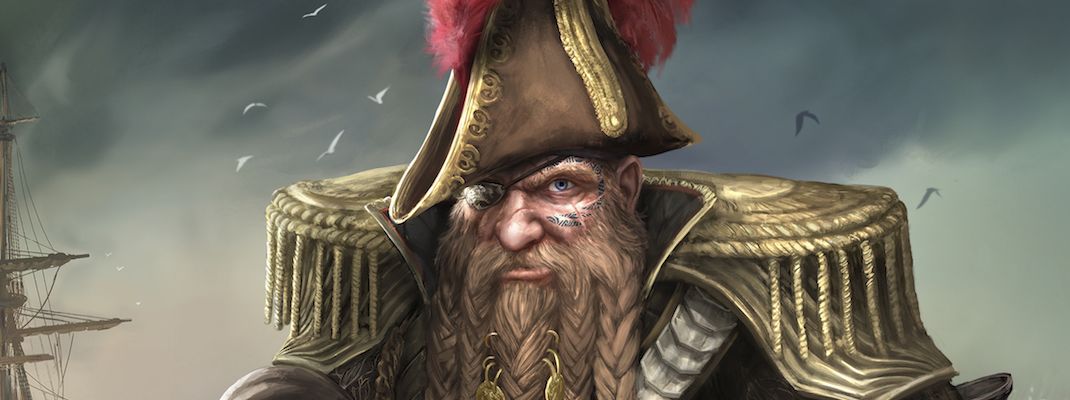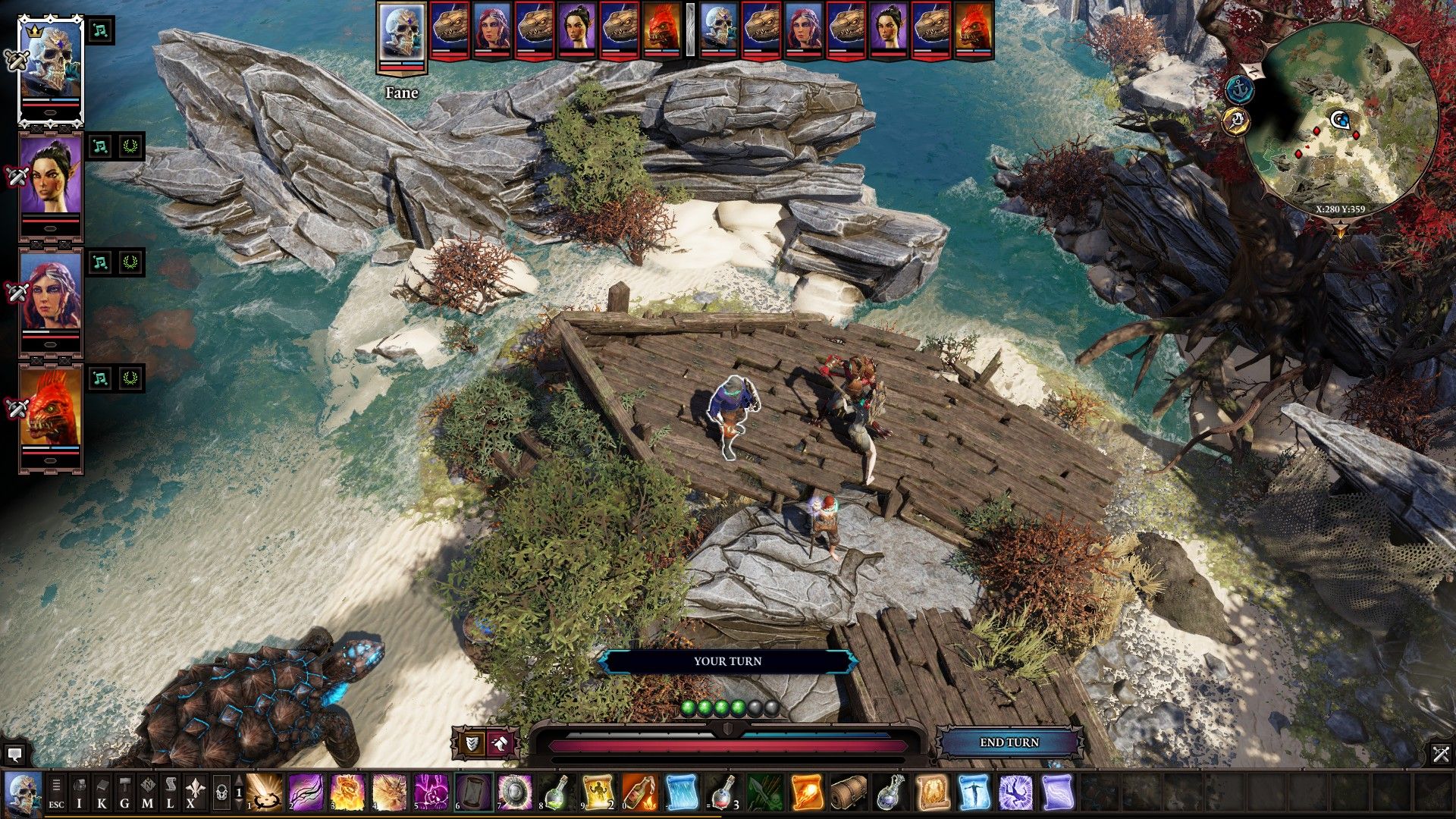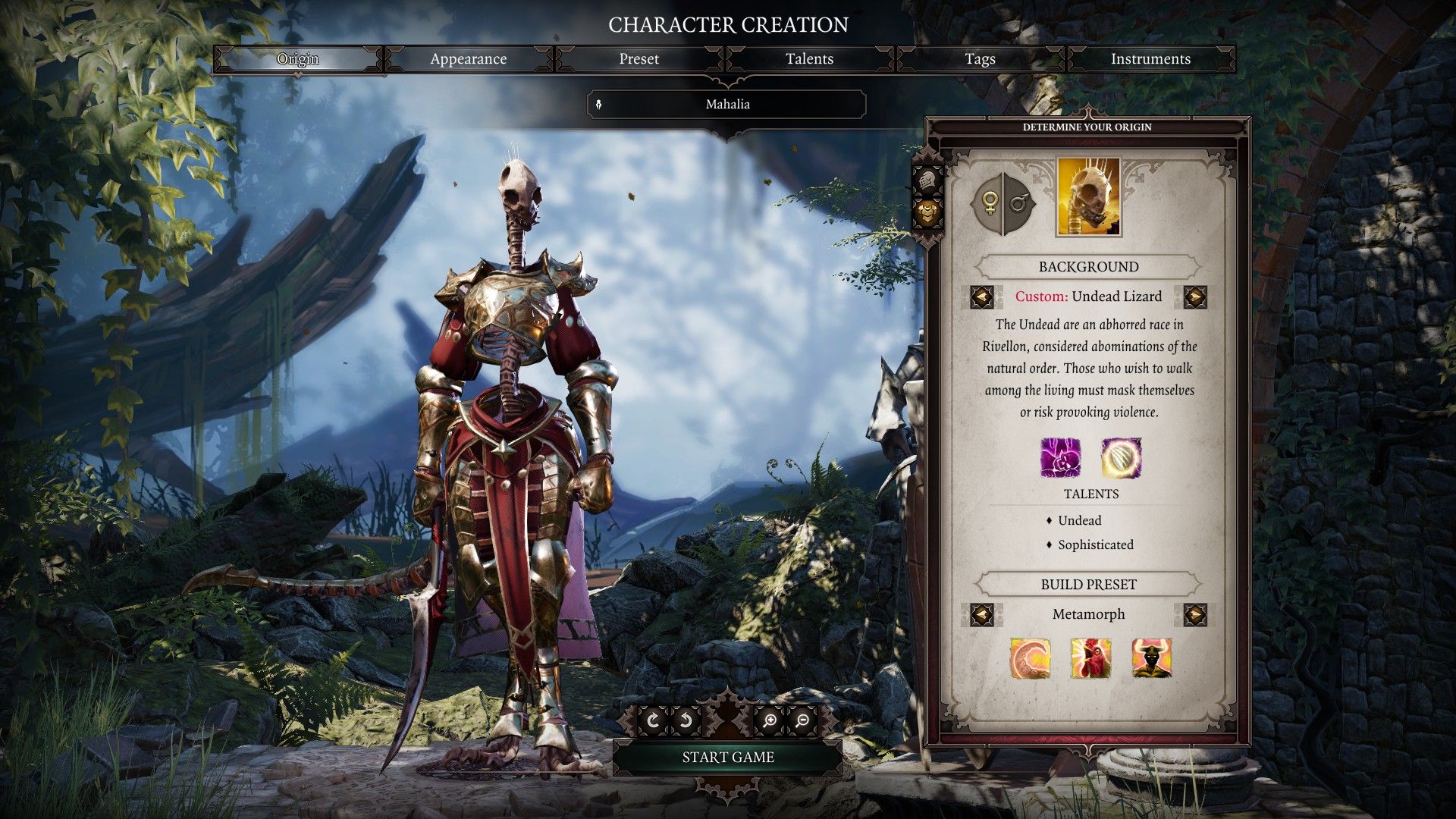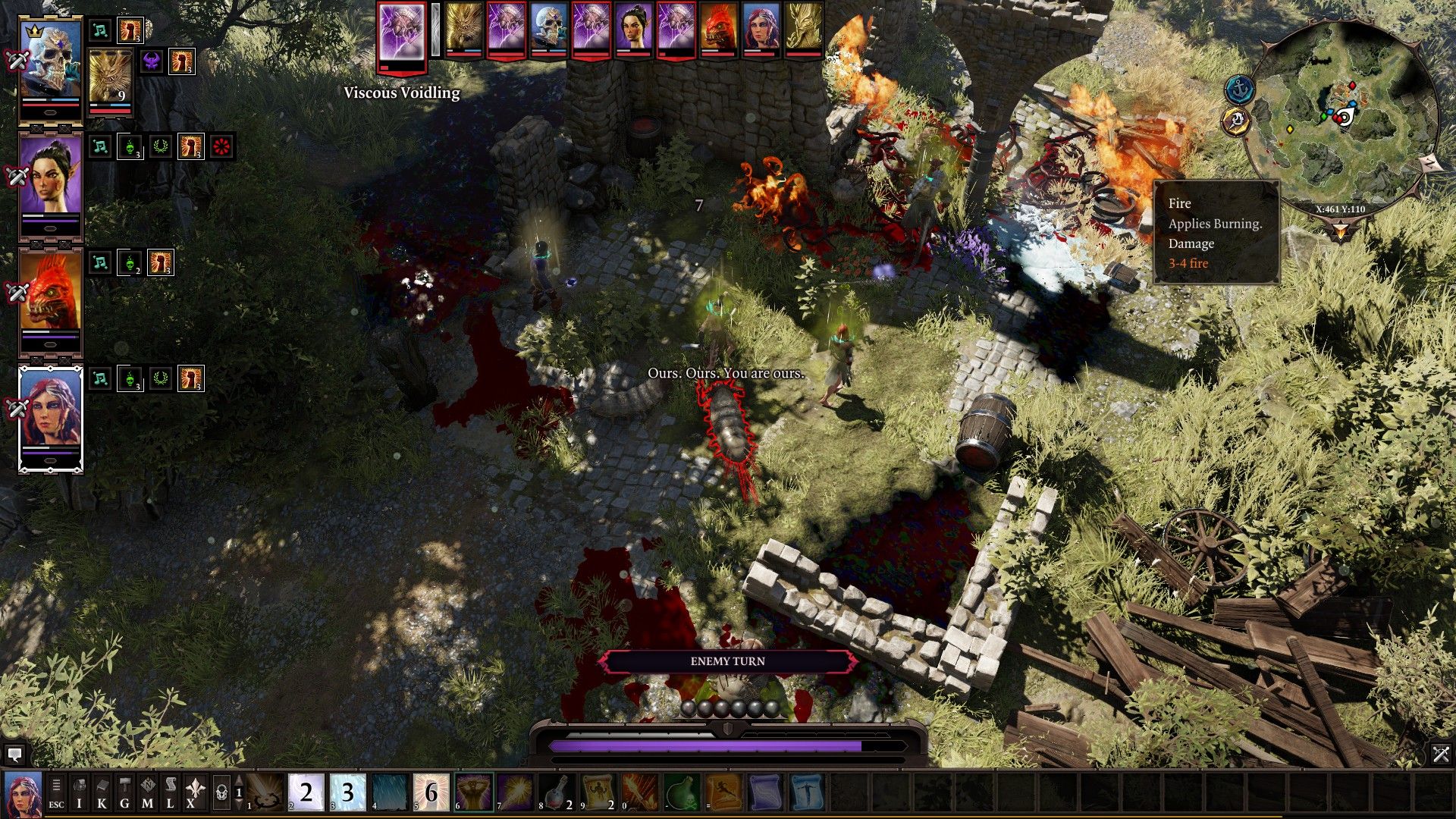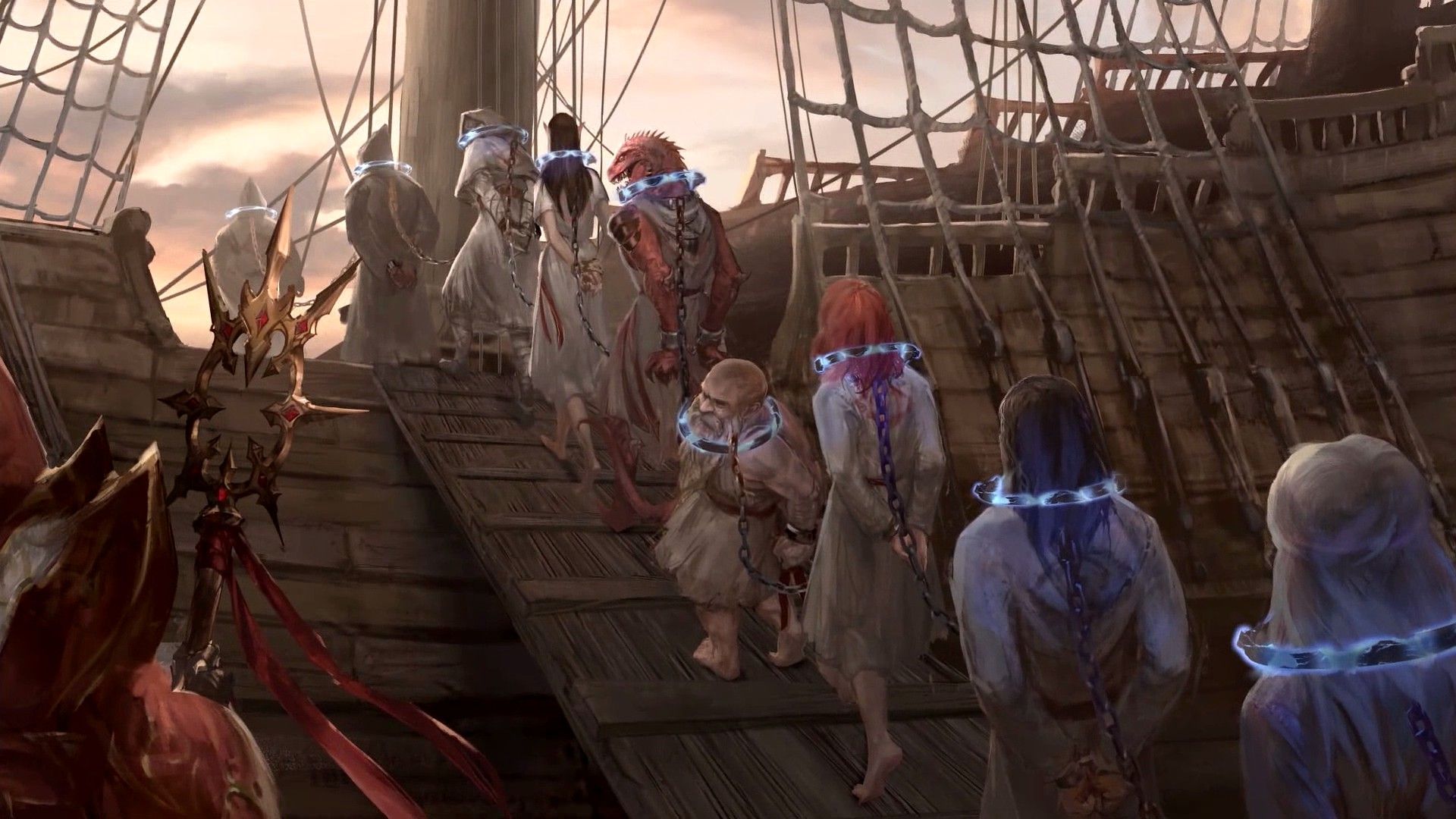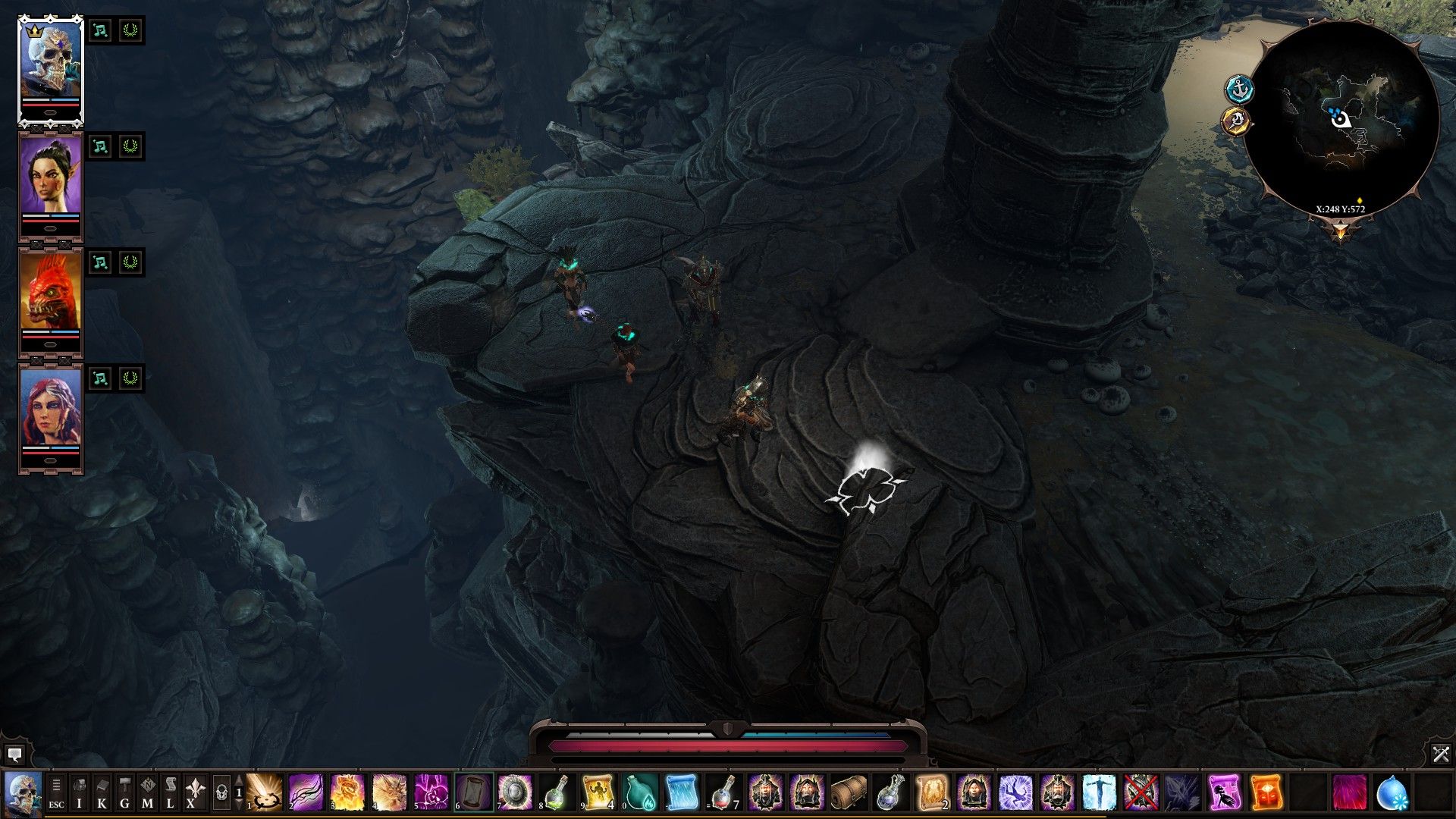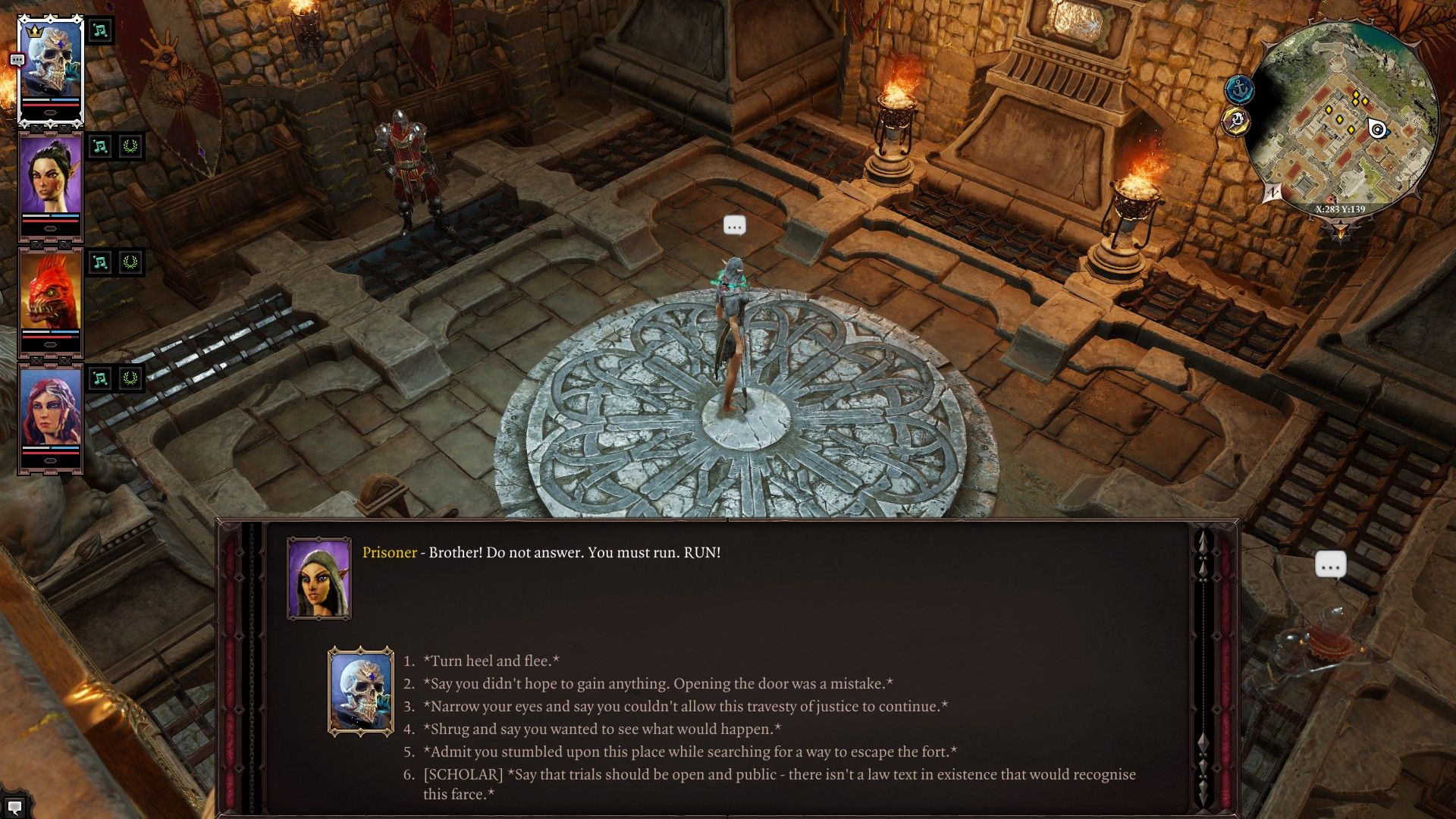Divinity might not be the biggest name in the gaming world, but when the sequel to the critically acclaimed Divinity: Original Sin was announced on Kickstarter, it met its funding goal in under twelve hours and eventually went on to vastly exceed it. One can only imagine the reaction Larian Studios had to this quick and enthusiastic reception to the game announcement. On one hand it showed amazing support from the fan community, since this support is saying that they loved the game so much they can't wait for the follow up. On the other hand, they loved it so much and are waiting for a sequel that will match or exceed its quality, so no pressure. After two years of waiting and an unlucky launch day thanks to a power outage in Ghent whose timing was so bad it was comedic, Divinity: Original Sin II has graduated from Steam Early Access and is now available to everyone in its completed form.
The first thing a player must do in the campaign for Divinity: Original Sin II is either select an Origin character or create a new character. There are technically eight races to choose, though that number is slightly inflated because of the Undead. The options are Human, Elf, Dwarf, Lizard and the Undead versions of each of these classes. Dwarfs are sturdy and begin with talents that contribute to vitality, dodging and sneaking. Elves gain bonuses to lore and may gain the memories of the dead by eating their corpses (yum!). Humans gain bonuses to critical chances, initiative and bartering. Lizards gain resistance to heat and poison and persuasion and have a useful function of being able to dig up secrets without a shovel. All Undead have the undead talent which causes healing items to harm them and poison to heal them and one of the other traits associated with their race when they were alive, plus they can also attempt to pick locks with their bony fingers and no other tools.
There are numerous preset classes to choose from: battlemage, conjurer, inquisitor, fighter, shadowblade, wizard and several more. In addition to the preset build players can select talents such as Elemental Affinity, Ambidextrous or Picture of Health to name just a few of the many. These talents provide stat bonuses or abilities, with one of the more interesting ones being Pet Pal that allows the character to speak to animals. Origin tags contribute to the character's background and open different dialog options such as barbarian, mystic or outlaw. The player may also choose an Origin Instrument for their character between bansuri, tambura, oud or cello, and this instrument may play automatically during certain parts of the game.
Origin characters are ready-made characters that have their own base personality and backstory. These characters include Beast, a dwarf who led a failed rebellion against the queen, Fane, an undead human who woke up with the world he knew long gone, Ifan ben-Mezd, a human who was a crusader who lost his faith and has become a Lone Wolf mercenary, Lohse, a star chanteuse whose body is now host to a mysterious entity who makes its presence known at inopportune times, The Red Prince, a brilliant warrior general who was exiled for cavorting with demons, and Sebille, an elf slave turned assassin who hunts her former master. While certain classes make more sense for these character's history, the player is free to change their build into whichever one they wish to play as. The Origin characters can also be recruited into the player's party, and their presence will activate origin events the player can engage in specific situations and they also open up certain dialog options. When recruiting them, changing their class is worked into the dialog so the player has a lot of customization options in their party. The player can also split up the party if they want to have someone do some sneaking around alone or divide the party into two groups of two, which is easily done by moving the portraits of the character in the upper left hand corner.
Set roughly a thousand years after the events of Divinity: Original Sin, the story begins with all the Origin characters along with the player and other NPCs on board a ship taking them to the prison island of Fort Joy, guilty of all being able to use the power of source like Rivellon's equivalent of a witch hunt. Source was declared an evil force, and all sourcerers have been rounded up and fitted with source muting collars to prevent them from unleashing their powers, which is quite a reversal of circumstances from its predecessor where the player took on the role of a source hunter. The time on the ship serves as an introduction, a way for the player to get comfortable with the mechanics of the game and get a sense of the story. They are free to explore the ship and get a feel for interacting with NPCs and combat. This sequence will end the same way regardless of the player's choices, and that end is unfortunately on Fort Joy, possibly the most ironically named place in Rivellon. Escaping from Fort Joy is the primary objective, but the speed at which this task is completing and how exactly the player goes about this is entirely up to the individual.
Upon arrival the player is alone and free to explore the island. Certain NPCs and Origin characters from the ship can be found and react to the player based on how the player behaved toward them previously. Up to three party members can be recruited and there is no shortage of side quests or other activities. How the player behaves towards the party members and other people around influences the attitude they form toward the player, and if they find the player particularly unpleasant they may leave the group outright. All Origin characters can be recruited but only three may be in the party at any time so players are encouraged to swap out members and see who is the best fit based on combat attributes and personality.
There are many treasures and interesting hidden encounters on the island and a good portion will be missed if the player is fixated on only solving the quest that is supposed to lead to the escape from Fort Joy. Original Sin II gives the player a lot of freedom in regards to their play style and how they want to interact with NPCs, but remember that every action carries its own consequence. During the review play through, Fane started peaceful and diplomatic with all magisters and other NPCs lurking about Fort Joy and always sought a non violent solution for each encounter, that is until one particular incident happened. A cat had decided to follow us, and even thought with the Pet Pal talent he didn't speak very much he was a friendly companion. During some exploration of Fort Joy Fane and his companions came near a locked gate, they weren't causing any trouble and guards told us to step away. As we started to take our leave a guard shot an arrow at the cat without provocation killing it instantly. These guards then saw a display of poison and fire that left their charred, broken corpses arranged in a display that would make John Wick proud. A well timed autosave from not even five minutes prior allowed for a load where the feline companion was back good as new, but this time Fane was getting on the other side of that gate, and these same guards were preemptively killed again before they could bring any harm to the cat. This had a slight impact in how the magisters viewed us in town, so from this point on the play shifted to a much more aggressive style that was intolerant of magisters.
The aforementioned slight impact on our reputation for taking out those guards and subsequently taking out some rather high ranking magisters was they started to engage Fane and company in battle on sight in Fort Joy, which is brought up to illustrate how player choices impact the game's environment. Had Fane not decided to slay about a dozen magisters they probably would have remained peaceful to us, but that is part of the appeal of Divinity: Original Sin II. A player doesn't have to be a homicidal maniac if they don't want to, there are nonviolent options for getting one's way either through charm or intimidation, or alternative routes to take to reach the desired location. Doors can be broken down, locks can be picked, or keys can be "found" or maybe someone can be sweet talked into opening. This is a game that is possible to complete while killing every NPC but that's not the only or even recommended way. Up until those guards messed with my kitty Fane was using the nonviolent solution to every encounter that he could, but we were able to change our social activity on the fly and the game immediately adjusted. Interaction with NPCs, both party members and everyone else, is a crucial aspect of shaping a player's role and standing in Rivellon.
On the note of killing magisters, combat in Divinity: Original Sin II is a complex but enjoyable affair. Battles are turn based with everyone having a set number of action points every turn. There is no finite MP meter but everything costs AP, including moving on the battlefield, and a lot of skills have a cool down period. Elevation factors into battle as well, with those on higher ground getting a damage bonus while those beneath them suffer a penalty. Trying to damage an enemy typically requires wearing away their physical or magical armor points before their vitality can directly be damaged but there is more to success in battle than just chipping away at someone's life bar. There are numerous status effects and elemental factors that can be used in battle, whether causing continuous passive damage, incapacitating foes or buffing or debuffing. Covering an area with oil for example will inflict slow status on people who wander into it, and if that doesn't sound bad enough a fire attack can be done on the oil covered surface to make everything burst into flames, setting anyone in the effected area on fire and causing passive damage for a number of turns. Should the player find themselves on the receiving end of this tactic, having someone with the ability to make it rain can remove the flames and burning status but can end up creating steam clouds, which sets up the board for a whole new set of problems.
There are four difficulty modes to choose from, which are Explorer, Classic, Tactician, and Honour. Explorer is designed for players who lack experience with RPGs or simply just want to enjoy the story. Taking advantage of the strategic skills that are offered helps, but being a brilliant military strategist is not required as this mode is pretty forgiving overall. Classic is geared towards RPG veterans or people who enjoy challenging combat. Your abilities will be tested but if you take the time to learn how the combat system works you should prevail, this mode is challenging but doesn't feel unfair. Tactician is the mode where the enemies have essentially harvested the source of George Patton, Zhuge Liang, Julius Caesar and Alexander the Great. This is where being a brilliant military strategist is almost essential to be victorious, as the enemies show no mercy at all and will throw every dirty trick they have at you. Playing this mode might also not be a bad way to learn some useful combat tactics. Honour mode is for the truly confident and cocky or those who just enjoy suffering, as this brings the grueling challenge of Tactician but adds a hardcore mode, meaning if you fall in battle say bye bye to the save file. This way could be potentially fatal to one's PC, but many bragging rights will come from completing the campaign on this setting.
RPGs are generally single player affairs and Divinity: Original Sin II can be played with zero interaction with other humans and still be a rewarding experience. The good folks at Larian Studios acknowledge, however, that gamers do in fact have friends and have made this title multiplayer friendly by creating a wealth of multiplayer content. The campaign can be played in its entirety with up to four players co-operatively either locally through the magic of the split screen or online. Because of the freedom offered in this title, some attempts at co-op can end up a little less than ideal, but any issue that arises from this has more to do with the player than the game. For "friends" like this, there is also a PvP arena mode, where those who tire of their friends incessant smack talk can take their parties into the arena and settle once and for all who is the best at the strategic combat of Divinity: Original Sin II.
The amount of freedom and impact the choices have during character interaction with NPCs shows that this Original Sin II was not just influenced by great video game RPGs, but also by great table top RPGs. An homage to this is game master mode, where a player can create an adventure for a group of their friends to play. This mode is made to be as accessible as something of this nature can be, but does take a bit of time to figure out the finer points. There is a ready made campaign players can use to sample, but this is where someone can design a dungeon layout including a narrative story, various effects, vignettes and enemy placement and have their friends play through it. This mode is analogous to running a successful tabletop gaming campaign, where the game master takes the time to put together a well thought out campaign and has some interested players this can end up being a very rewarding mode. The inclusion of a mode like this is very ambitious, and could almost be its own role playing game but oddly enough this came about as a Kickstarter stretch goal.
Original Sin II is an isometric PC RPG that plays beautifully with mouse and keyboard but also offers full controller support. Perhaps this was a result of how well the controller worked for Divinity: Original Sin Enhanced Edition on console or maybe just a preemptive move with plans for this to go to console, but either choice for control input works well. The music is beautifully composed and accompanies this fantasy setting splendidly, along with the impressive voice acting, and having this title be fully voiced was no small feat. The graphics will not push higher end graphics cards to the limit, but the design of characters, environments and monsters look great as do the cutscenes that possess a painting-like quality. The overall tone of Divinity: Original Sin II is dark and serious, but somehow manages to maintain an element of lighthearted fun and levity. There are a few humorous, sarcastic quip dialog options that pop up quite a bit and the Pet Pal talent can lead to a lot of interesting side quests and humorous dialog. The greatest moment of silliness is when the player enters stealth mode and assumes the form of a shrubbery walking around. While one probably wouldn't file this title under the humor section, it's clear the development team had a sense of humor while creating this.
Closing Comments:
Divinity: Original Sin II pulled off the impressive task of taking the kitchen sink approach to game design by cramming as much into it as possible yet somehow making it all work, making it a fantastic title for solo or multiplayer gaming. Playing the Divinity: Original Sin is not required to enjoy this title or its story, though having played the first game will make the experience more rewarding. Everything about Divinity: Original Sin II is of the highest quality and any negatives that could be said are basically nitpicking, such as the camera angles might obscure characters one percent of the time or the inventory set up isn't as nice as you've seen in some other games. No game is perfect, but this one comes closer than most. Larian Studios created a masterpiece with Divinity: Original Sin and using that as a template and listening to player feedback during the development process, they challenged themselves to create a superior successor and accomplished that goal. Divinity: Original Sin II is not only a contender for best game of 2017, but one of the best RPGs ever created. The game could easily take a hundred hours to complete and the interplay between the well-constructed story, gameplay mechanics and player freedom creates a world I could see myself revisiting with different parties just to watch the story unfold differently. Simply put, Divinity: Original Sin II is truly divine.
Divinity: Original Sin II
Reviewed on PC

